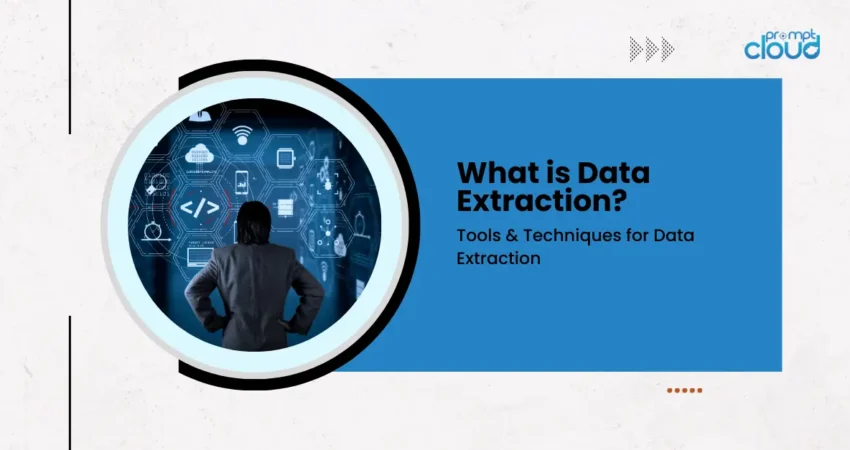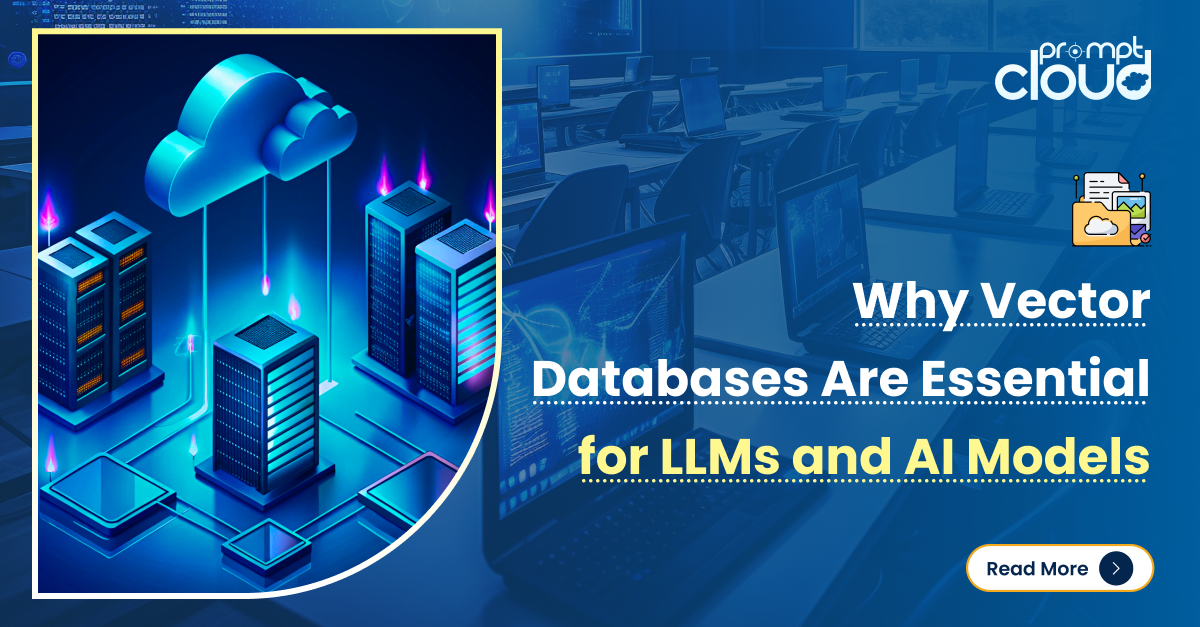
Data extraction tool plays a crucial role in today’s data-driven world, where organizations rely on large volumes of data to make informed decisions. The extraction of pertinent data from diverse sources is imperative for businesses spanning different industries.
This article delves into the concept of data extraction methods, examining its significance, providing examples and use cases across various industries. It covers the data extraction process, typical challenges encountered, available tools, efficient extraction techniques, and best practices for achieving successful data extraction.
What is Data Extraction
Data extraction methods involve obtaining structured or unstructured data from various origins, including databases, websites, APIs, PDFs, documents, and social media platforms. The process encompasses recognizing and collecting particular data components from these origins, converting them into a standardized format, and merging them for subsequent analysis or integration with other systems.
Importance of Data Extraction
Data extraction methods plays a pivotal role in every data analysis and business intelligence approach. The following are essential reasons highlighting the significance of data extraction:
- Decision-making: Extracted data provides valuable insights that organizations can use to make informed decisions, identify trends, and understand customer behavior.
- Data integration: By extracting data from multiple sources, organizations can consolidate it into a single dataset or data warehouse. This helps in generating comprehensive reports and performing holistic analytics.
- Process automation: Data extraction methods automate the collection of relevant data, saving time and effort compared to manual data entry.
- Competitive advantage: Extracted data can help organizations to stay ahead of their competitors by identifying market trends, customer preferences, and potential opportunities.
Data Extraction Examples and Use Cases
Let’s explore how data extraction is utilized in different industries:
1. Real Estate
- Property listings: Real estate companies extract data from websites and databases to gather information on available properties, prices, and features. This helps them in creating comprehensive listings for potential buyers.
- Market research: Extracted data on property sales, rental prices, and market trends enables real estate businesses to analyze housing markets and identify investment opportunities.
2. Finance
- Banking transactions: Financial institutions extract data from customer transactions to analyze spending patterns, detect fraudulent activities, and personalize services.
- Stock market analysis: Extracting stock market data, such as historical prices and company performance metrics, allows financial institutions and investors to make informed investment decisions.
3. Travel
- Flight and hotel prices: Online travel agencies extract data from airline and hotel websites to compare prices, availability, and customer reviews.
- Customer reviews: By extracting and analyzing customer reviews from travel websites, companies in the travel industry gain insights into customer satisfaction, preferences, and feedback.
How to Extract Data
The typical procedure for data extraction generally comprises the following stages:
- Recognize data sources: Identify the origins from which the pertinent data should be extracted. These origins may encompass databases, websites, APIs, documents, or social media platforms.
- Define data extraction requirements: Specify the criteria for extracting the required data elements. This can involve selecting specific fields, date ranges, or any other relevant parameters.
- Choose extraction tools: Select the appropriate tools or software for data extraction based on the specific requirements and sources. There are various data extraction tools available, both commercial and open-source.
- Implement data extraction: Configure the chosen extraction tool to connect to the data sources and extract the required data elements. This may involve setting up APIs, web scraping, or utilizing pre-built connectors.
- Transform and cleanse data: Once extracted, the data may require transformation and cleansing to ensure consistency and accuracy. This may involve data format conversions, data normalization, or data deduplication.
- Store extracted data: Consolidate the extracted data into a centralized repository or data warehouse for further analysis or integration with other systems.
- Validate and verify: Validate the extracted data to ensure its quality, integrity, and accuracy. This step is crucial to avoid errors or inconsistencies in subsequent data analysis.
Data Extraction Challenges
While data extraction offers numerous benefits, it also comes with a set of challenges. Some common data extraction challenges include:
- Data source variability: Different data sources have different structures, formats, and accessibility options, making it challenging to extract data consistently.
- Data volume and complexity: Handling large volumes of data and extracting relevant information without overwhelming computing resources can be a complex task.
- Data quality and accuracy: Extracted data may contain errors, duplicates, or inconsistencies, which can impact the reliability and accuracy of subsequent analysis.
- Data privacy and compliance: Data extraction must adhere to privacy regulations and compliance requirements to ensure the legality and ethical use of extracted data.
What is a Data Extraction Tool
Data extraction tools are specialized software or applications crafted to streamline the automation of extracting data from diverse sources. These tools provide features such as web scraping, data parsing, API integration, data connectors, and capabilities for transforming data, aiming to simplify and accelerate the extraction process. Some popular data extraction tools include:
- Web scraping tools: These tools enable the extraction of data from websites by parsing HTML content and capturing specific data elements.
- API integration tools: These tools facilitate the extraction of data from APIs (Application Programming Interfaces) provided by different applications or platforms.
- Database extraction tools: These tools automate the extraction of data from databases such as SQL, Oracle, or MongoDB.
- Document extraction tools: These tools specialize in extracting data from different document formats like PDFs, Word documents, or spreadsheets.
Data Extraction Solutions
In addition to data extraction tools, organizations can also leverage data extraction services provided by external vendors or specialized companies. These services offer expertise, scalability, and automation capabilities to handle large-scale data extraction solutions. Outsourcing data extraction tasks can be beneficial when organizations lack the necessary resources, technical knowledge, or time to perform data extraction on their own.
Techniques For Efficient Web Scraping
To ensure efficient data extraction solutions, organizations can employ the following techniques:
- Pattern recognition: Utilize techniques like regular expressions or machine learning algorithms to identify patterns and extract relevant data elements from unstructured sources.
- Parallel processing: Distribute extraction tasks across multiple computing resources to improve speed, especially when dealing with large volumes of data.
- Incremental extraction: Rather than extracting the entire dataset repeatedly, perform incremental extractions by only capturing the updated or new data to save resources and time.
- Data validation: Implement validation mechanisms during the extraction process to verify the accuracy and consistency of extracted data.
Best Practices to Successfully Extract Data
Extracting data is a crucial procedure that empowers organizations to leverage the potential of data for decision-making, analysis, and business expansion. To guarantee effective and streamlined data extraction, organizations should take into account the following recommended practices:
- Clearly define data extraction requirements and objectives before initiating the process.
- Select the appropriate tools or services based on the sources and complexity of the data to be extracted.
- Ensure data quality and accuracy through validation and verification mechanisms.
- Comply with privacy regulations and ethical considerations while handling extracted data.
- Regularly monitor, maintain, and update the data extraction tool or process to adapt to changing requirements.
By employing these best practices, organizations can leverage data extraction as a key tool for business intelligence, competitive advantage, and growth.
Tired of manually collecting data from various websites? Extracting data can be a time-consuming and tedious task, but PromptCloud can make it a breeze. Increase your productivity and efficiency by automating your data extraction tool or process with PromptCloud.Contact us at sales@promptcloud.com!
Frequently Asked Questions
What is a data extraction tool?
A data extraction tool is a software designed to retrieve data from various sources, which can include websites, databases, business applications, and more. These tools automate the process of collecting data and formatting it into a structured format that’s easy to analyze and use. Data extraction tools are essential for tasks such as data migration, integration, and big data management. They are particularly useful for organizations that need to process large volumes of data efficiently, allowing them to extract valuable insights and make data-driven decisions without manual intervention.
What is the best data extraction tool?
Choosing the “best” data extraction tool often depends on specific needs, such as the data sources you are working with, the complexity of the data extraction tasks, your budget, and the technical expertise available. However, several tools are widely recognized for their robust features and reliability. Here are some top data extraction tools that are popular in various industries:
- Octoparse – Octoparse is a user-friendly, powerful web data extraction tool that is great for non-programmers. It automates web data extraction on a scheduled basis, supports both cloud-based and local extraction, and can handle complex websites with AJAX, JavaScript, etc.
- Import.io – This tool allows you to turn web data into structured data. It is highly effective for scraping websites and also offers integration features that allow you to incorporate web data into your own app or web service.
- ParseHub – Known for its ability to handle websites with a lot of interactivity and complexity, ParseHub can extract data from sites using AJAX and JavaScript. It offers a visual point-and-click interface to select the data you want to extract.
- DataMiner – A Chrome and Edge browser extension that is used to scrape data from web pages and into a variety of file formats such as Excel, CSV, or Google Sheets. It’s great for users who need quick and easy data extraction without extensive setup.
- Scrapy – For those who are comfortable with programming, Scrapy is a highly extensible open-source framework for large scale web scraping. It allows developers to build their own crawlers for extracting data from websites.
- Beautiful Soup – This is a Python library for pulling data out of HTML and XML files. It is particularly good for quick jobs where you need to scrape some data off the web and integrate it into your workflow.
- UiPath – A more comprehensive tool that is part of a larger suite of robotic process automation (RPA) tools. UiPath can automate the data extraction process not only from websites but also from documents, PDFs, and other sources.
Each of these tools offers unique features that may cater to different business needs. For instance, Octoparse and Import.io are excellent for non-coders, while Scrapy and Beautiful Soup offer great flexibility for those with programming skills. It’s important to assess the specific requirements of your data extraction projects and choose a tool that best fits your objectives and skill set.
Is Excel a data extraction tool?
Excel itself is primarily a spreadsheet program used for data analysis, manipulation, and visualization, but it does have features that allow for basic data extraction. These features can be used to import data from various sources into Excel for further processing. Here are some ways in which Excel can function as a data extraction tool:
- Get & Transform (Power Query): Excel’s Power Query tool (known as Get & Transform in Excel 2016 and newer) is particularly powerful for extracting data. It allows users to connect to various data sources such as databases, online services, and other external documents, import data, and then transform that data using a user-friendly interface before loading it into Excel.
- Web Queries: Excel can perform web queries to pull data directly from a web page into a spreadsheet. This is useful for extracting data from tables on web pages or from web-based data feeds.
- Data Import from Files: Excel can extract data from various file formats like CSV, TXT, and other Excel files. Users can import this data directly into their workbooks for analysis.
- Database Connections: Excel can connect to SQL databases using ODBC or direct connections, allowing for the extraction of data from relational databases. This data can then be analyzed directly in Excel.
While Excel offers these data extraction capabilities, it is important to note that it might not be as efficient or robust as specialized data extraction tools, especially when dealing with large datasets or complex data scraping needs. Excel is better suited for small-scale or simpler data extraction tasks and is most powerful when used for what follows after data extraction—data analysis and visualization.
What is an extraction tool?
An extraction tool is a software application or script that is used to retrieve data from various data sources. These tools are designed to automatically pull data from structured or unstructured sources such as databases, websites, documents, or other data storage facilities. The extracted data can then be processed, transformed, and stored in a format suitable for analysis, reporting, or further processing.
Here are the key characteristics and functionalities of extraction tools:
- Data Retrieval: Extraction tools can access data from different types of sources, including live web pages, database systems, APIs, and even from within documents like PDFs or text files.
- Automation: These tools often automate the repetitive task of data collection, making it efficient to gather large volumes of data without manual intervention.
- Data Formatting: After extraction, the tools can transform the data into a structured format such as CSV, JSON, or XML, or directly input it into a database or data warehouse.
- Integration Capabilities: Many extraction tools offer the ability to integrate with other systems or software, allowing the seamless flow of data into data analysis tools, business intelligence platforms, or other operational systems.
- Scalability and Performance: High-quality extraction tools are designed to handle large datasets efficiently, providing capabilities to manage the load and performance impacts on source systems.
Extraction tools are crucial in data-driven environments, helping organizations to capitalize on the valuable data they can gather to inform business decisions, gain competitive advantage, and drive operational efficiencies. These tools are widely used in fields such as data science, business analytics, market research, and software development.



















